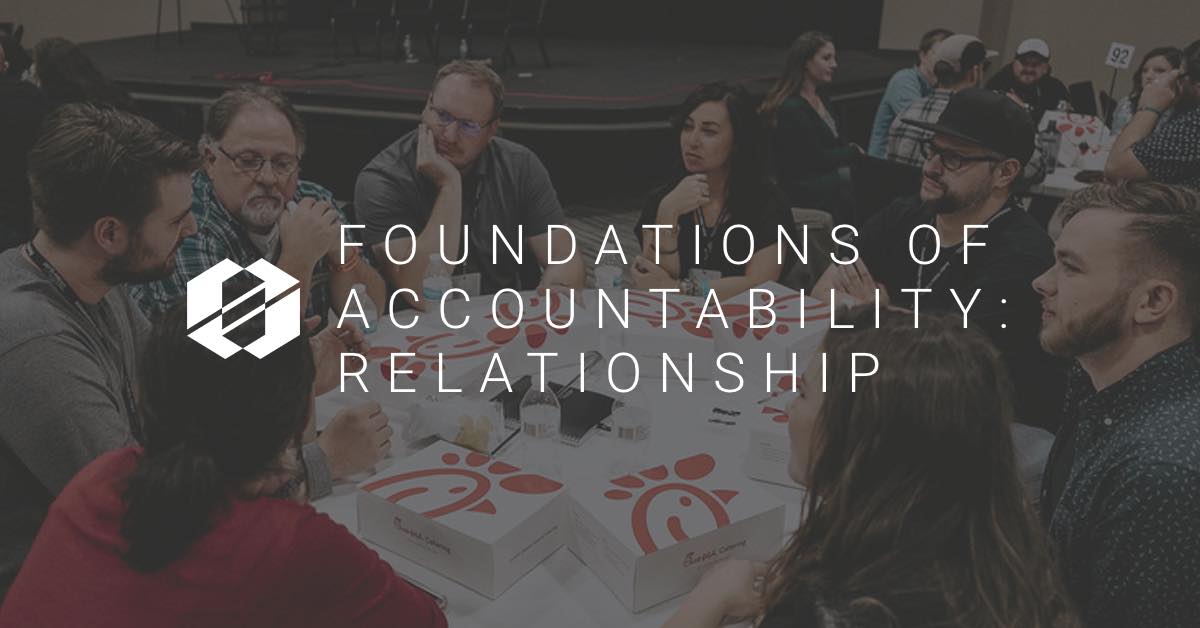For the past few weeks we have been doing a series on the Five Foundations of Accountability. This week Dr. Johnston is focused on the foundation of Relationship. Whether you are leading a creative or volunteer team if you want to encourage your team you need to build a rapport.
You’ve probably heard the old adage “It’s not personal, it’s just business”, but when it comes to building buy-in and elevating the accountability of your team, it’s always personal because at the heart of any good working relationship lies an actual relationship.
I’m surprised how often I meet leaders who miss this. It’s not like they’re ogres or misanthropes. They just fall into the groove of their work environment and the functional transactions that happen with team members and colleagues and they lose sight of the genuine personal relationships at the core. That’s a problem because it turns out that your ability to call people to greater accountability and commitment is directly connected to the strength of your relationship with them. Where relationships are shallow or perfunctory, accountability usually is too.
This means that leaders looking to strengthen their leadership may need to take stock of their relationships more than their organizational skills. In fact, some of the very things they do to manage time, improve efficiency, and get more done have a way of diluting their relationships, distancing others, and damaging the commitment of their teams.
If you want to build buy-in and elevate the accountability of your team members, loosen your grip on efficiency just a little and cultivate their sense of an ongoing relationship with these two tactics
Create Continuity
In our daily work, we often interact with team members, but an ongoing relationship is more than simply a collection of interactions, and the difference is continuity– the sense that these encounters are part of an ongoing story. An “interaction” happens incidentally and holds your attention only temporarily. You tune in when its pertinent and tune out when it’s not. So, there’s no real connection between these moments over time, no continuity. A relationship, on the other hand, is enduring. It’s a story perpetually “in progress” and a part of your heart, if not your attention, is permanently subscribed to it. You never fully tune out because it’s always pertinent.
That kind of continuity is hard to find in organizations because the rush of activities and expectations compartmentalizes experience and reduces most relationships to utilitarian transactions. But if you want to foster accountability, you need to fight this effect. Here are three tactics that will help you boost the continuity and improve relationships in the rush of everything else.
Get Messy
Let’s face it, real relationships are seldom neat or tidy. They don’t always fit comfortably in a Day Timer and they often sidetrack or slow down To Do Lists. As a result, many leaders cultivate a sort of emotional “buffer zone” between themselves and the people they lead. They figure that some psychological distance will keep them from getting tangled up in the kind of interpersonal drama that complicates things and slows their roll.
They’re probably right– when you’re aloof, you don’t get bogged down with as many relational issues. But you also don’t create the personal connection it takes to move your team members when it matters most. That kind of self-preservation and control comes at a price, and the price is paid in influence. You can’t stay above-the-fray or emotionally removed from your people and still be the kind of leader that inspires or influences them in profound ways. There is an unbreakable reciprocity to influence that requires you to get closer, get messy, and get real if you want to make a big difference. Think of it this way: If you want to be close enough to impact your team members in meaningful ways, you’ll need to get close enough to be influenced meaningfully in return.


